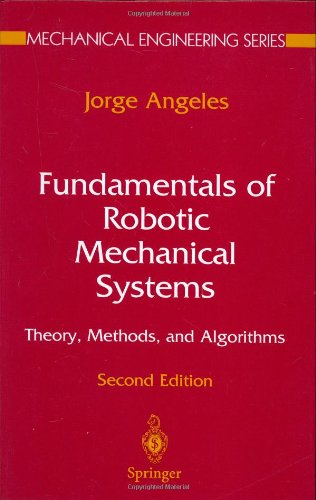

Most ebook files are in PDF format, so you can easily read them using various software such as Foxit Reader or directly on the Google Chrome browser.
Some ebook files are released by publishers in other formats such as .awz, .mobi, .epub, .fb2, etc. You may need to install specific software to read these formats on mobile/PC, such as Calibre.
Please read the tutorial at this link: https://ebookbell.com/faq
We offer FREE conversion to the popular formats you request; however, this may take some time. Therefore, right after payment, please email us, and we will try to provide the service as quickly as possible.
For some exceptional file formats or broken links (if any), please refrain from opening any disputes. Instead, email us first, and we will try to assist within a maximum of 6 hours.
EbookBell Team

4.4
72 reviewsThis book deals with robots-such as remote manipulators, multifingered hands, walking machines, flight simulators, and machine tools-that rely on mechanical systems to perform their tasks. It aims to establish the foundations on which the design, control and implementation of the underlying mechanical systems are based. The treatment assumes familiarity with some calculus, linear algebra, and elementary mechanics; however, the elements of rigid-body mechanics and of linear transformations are reviewed in the first chapters, making the presentation self-contained. An extensive set of exercises is included.
Topics covered include: kinematics and dynamics of serial manipulators with decoupled architectures; trajectory planning; determination of the angular velocity and angular acceleration of a rigid body from point data; inverse and direct kinematics manipulators; dynamics of general parallel manipulators of the platform type; and the kinematics and dynamics of rolling robots. Since the publication of the previous edition there have been numerous advances in both the applications of robotics (including in laprascopy, haptics, manufacturing, and most notably space exploration) as well as in the theoretical aspects (for example, the proof that Husty's 40th-degree polynomial is indeed minimal - mentioned as an open question in the previous edition). This new edition has been revised and updated throughout to include these new